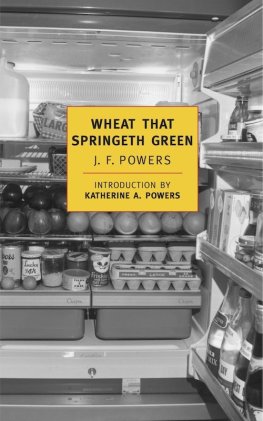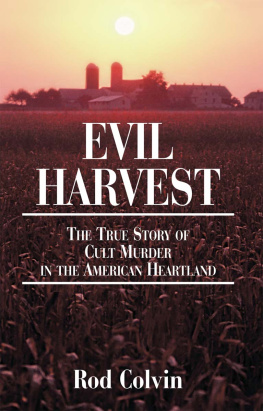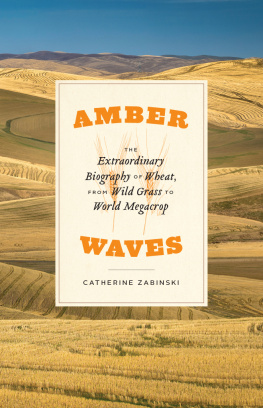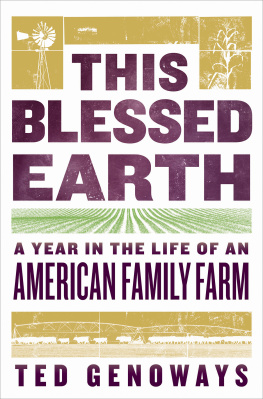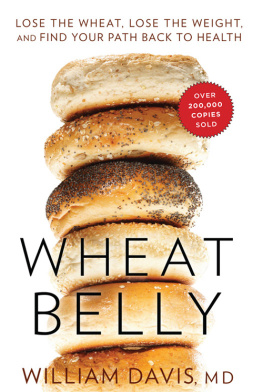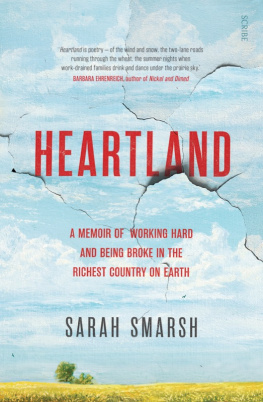AMERICAN HARVEST
GOD, COUNTRY, AND FARMING IN THE HEARTLAND
MARIE MUTSUKI MOCKETT
Graywolf Press
Copyright 2020 by Marie Mutsuki Mockett
The author and Graywolf Press have provided this e-book to you for your personal use only. You may not make this e-book publicly available in any way. Copyright infringement is against the law. If you believe the copy of this e-book you are reading infringes on the authors copyright, please notify Graywolf Press at: us.macmillanusa.com/piracy.
Photographs on pages reproduced with the permission of the artist; photograph by Juston Wolgemuth.
This publication is made possible, in part, by the voters of Minnesota through a Minnesota State Arts Board Operating Support grant, thanks to a legislative appropriation from the arts and cultural heritage fund. Significant support has also been provided by the National Endowment for the Arts, Target, the McKnight Foundation, the Lannan Foundation, the Amazon Literary Partnership, and other generous contributions from foundations, corporations, and individuals. To these organizations and individuals we offer our heartfelt thanks.

This book is made possible through a partnership with the College of Saint Benedict, and honors the legacy of S. Mariella Gable, a distinguished teacher at the College. Support has been provided by the Manitou Fund as part of the Warner Reading Program.
Note to Reader: Certain conversations have been reconstructed to the best of the authors abilities and certain names have been changed. In some cases, incidents have been compressed to accommodate the narrative flow.
Published by Graywolf Press
250 Third Avenue North, Suite 600
Minneapolis, Minnesota 55401
All rights reserved.
www.graywolfpress.org
Published in the United States of America
ISBN 978-1-64445-017-8
Ebook ISBN 978-1-64445-116-8
2 4 6 8 9 7 5 3 1
First Graywolf Printing, 2020
Library of Congress Control Number: 2019933485
Jacket design: Kyle G. Hunter
Jacket photo Sumaya Agha
For my father
We love because its the only true adventure
NIKKI GIOVANNI
AMERICAN HARVEST
PROLOGUE

THIS IS THE LAND OF PRIMARY COLORS: red combine, blue sky, yellow wheat. Under the earth, pancaked layers of sediment conceal elusive minerals coveted by men, and the strewn, jigsaw bones of monsters awaiting reassembly. Untouched, the surface is a prairie, a tough lattice of grasses and shrubs that frame the darting meadowlarks and snakes who work together with the ants to survive dry days. There is little moisture, though winters can bring three feet of snow; rain will bring only half that. The Oglala Sioux, the Comanche, the Kiowa, and other Native Americans who once lived on this land by themselves hunted for buffalo and foraged for berries, nuts, and wild potatoes. But Europeans supplanted those potatoes for wheat. The buffalo have dwindled. The Indians who live here no longer predominate. Now the land is dotted with windmills and farms, though the coyotes still sing in the evening, and you can train your eyes to spot the thin caramel-colored frames of the antelope camouflaged by kicked-up dust smearing the spaces between the clusters of hardy yucca.
The primary colors give way to gradations of scarlet, pink, and lemon in the early morning when the sun peers over the horizon. At sunset, the sky often employs a darker palette, particularly if the light is bruised by a storm or smoke from a wildfire. You can sit on top of a cylindrical, fifteen-foot-high steel grain bin and watch the sun go from one end of the horizon to the other. Your view might be impeded by clouds, or weather, by which is meant rain and that old enemy hail. You can do this and feel just how tiny a passenger you are on the sphere that is your home as you whirl around and around the sun. You can feel the vastness of the sky, the inch-by-inch eternity of a day.
You might see a storm. Or rather: you would feel it first. Sitting there on the grain bin, there is a cool exhalation on your face. And though the temperature fluctuates during the day, this cold breath is an intruder. It lets you know that Something Else has entered the prairie. Sometimes the storms stay far away, and you can watch them as a man observes a game of football; they are out there , crawling on wispy gray legs across the prairie. Sometimes the sky slices and sputters with lightning, and you can watch that from a safe distance, too, though you shouldnt forget to look behind you. Things come up from behind sometimes.
The rain might come toward you at a great velocity, generally growing first in the west. Clouds gather and heave, vapor massing. If you see this great gray, inky thing racing toward you, and if you are near shelter, scurry off the grain bin and into someplace dry, even if you are just getting into your pickup truck. Because you will want to be inside before the hail or the lightning commits its annihilation of the crop.
When it isnt raining, you feel a quiet and persistent sentience. All around you, things are growing. Wheat seeds sprout and climb toward the sun, a fraction of an inch a day. This is a thing to consider. As you sit on the grain bin that is your perch, for miles and miles around you, plants are reaching. Sunflowers turn their shaggy manes toward the sun, and in the summer, their black kernels swell and grow fat. Things aspire, reach, ripen. You might even hear the crack of the hard seed shell when the first thirsty tongue of the plant slides out, looking for wet dirt. Maybe you hear the mass exhalation of thousands of kernels of wheat as they fatten into the little balloons that will become seeds. This world is alive and busy. It requires that you pay attention.
The smallest elements are in perpetual motion, always creating or decaying, directed by some invisible force. Perhaps this is why it is easy here to feel that God exists, and that he inspires awe.
We focus on the plantsmaybe because we eat them. But our story really starts with the soil. Without the soil there is nothing in which to grow the wheat, nothing to hold the moisture, and nothing to hold the tractors and trucks and bins.
This is the story of the land and the people who own it and how they learn over and over again who owns what and how best to coax things out of the land, and how planting and harvesting teach them what to believe, or how they try to take what they believe and plant it in the land.
PART ONE
ONE
I AM FROM THE COASTS: seventeen years in California, four years of college in New York City, more years of ping-ponging between the East and West Coasts (Cambridge, the South Bay, back to New York City, and San Francisco). I have routinely flown over the rest of the country. When I look out of the windows of an airplane, I can see them down there: the flyover states, otherwise known as the heartland.
Lets take seven. Texas, Oklahoma, Kansas, Colorado, Nebraska, Wyoming, and Idaho. When you fly overif you dodo you see the checkerboard of monoculture fields, the eerie circular green shapes formed by robotic sprinklers, and the small towns connected by twists of interstate? What do you think?



